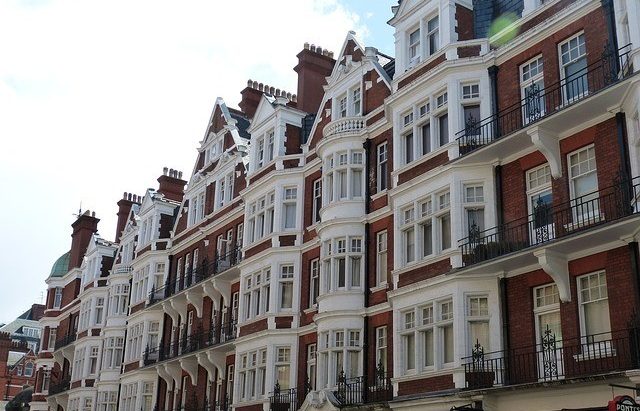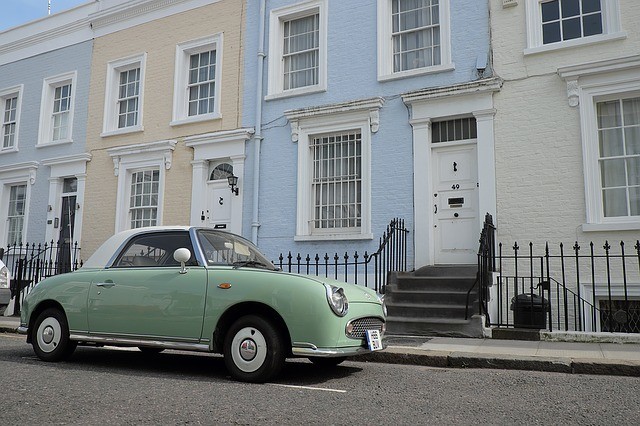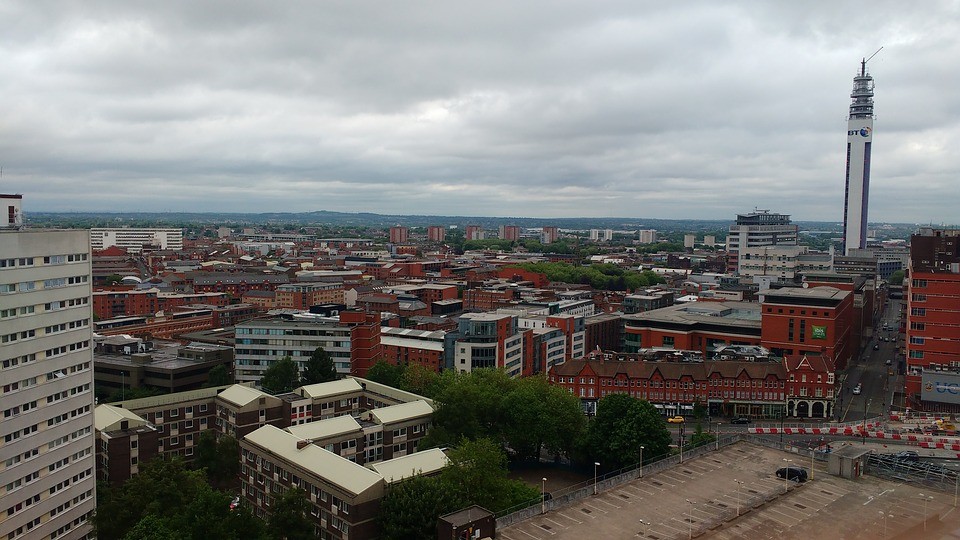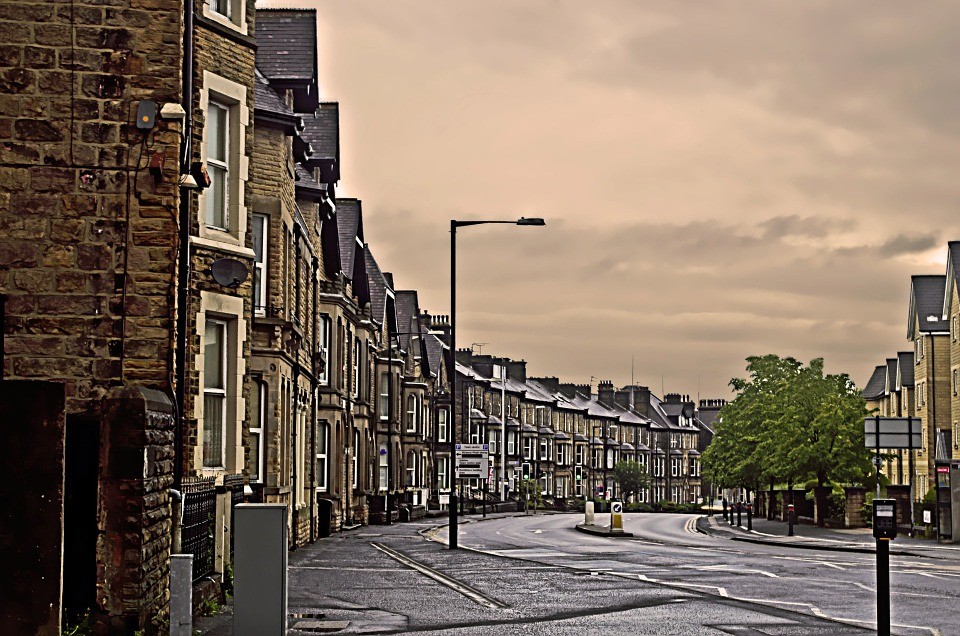Property investment at its peak in Yorkshire
Landlords from the Yorkshire and Humberside region have the biggest appetites for property investment, according to a new survey by property consultancy Knight Knox. Landlords operating in this region are set to buy more properties for the purpose of renting them out in the next five years than any other.
The survey found that 60% of landlords in Yorkshire and Humberside intend to buy another buy-to-let property in the next five years, some 20% above the national average (40%). More than a third of buy-to-let landlords in Yorkshire are planning to purchase another home within two years.
Urban.co.uk founder says controversial Heathrow third runway could be good for buy-to-let
The government has approved plans for a controversial third runway to be built at Heathrow Airport. The expansion project, which has been beset by delays and hold-ups for 20 years, has a proposed completion date of 2026.
Local residents and their local MPs have campaigned vigorously against the planned expansion, and opposition to the third runway is still very high. A £2.6 billion compensation fund for residents has been announced, but this is unlikely to provide much comfort to those whose homes lie in the construction path, with many set to be demolished to make way for the new runway.
Sunderland once again revealed as the worst place to sell a property
Sunderland is the slowest city in England for selling property, according to a new report by Ready Steady Sell.
The study, carried out by the North East-based quick house sale agency, found that properties on the market in Sunderland take on average 302 days to sell. Bradford didn’t
fare much better (287 days), while in South Shields the average home stays on the market for 273 days.
The North East performs poorly as a selling location, with North Shields – a town opposite South Shields on the north bank of the River Tyne and only a few miles from Newcastle –
recording an average sale time of 265 days. The findings were taken from the past 12 months of data Ready Steady Sell have collected from homeowners applying on their website (England only) and those listing via their partner online estate agency. Continue reading
London rental supply reaches critical point, says ARLA
ARLA Propertymark has issued a stark warning regarding London’s rental supply, with the number of properties available to rent in the capital standing 46% below the national average in January.
According to the trade body’s latest findings, letting agents in London were typically managing 99 properties in January, in comparison to a national average of 184. London was also the lowest region for supply in December, with 130 properties compared to a national average of 200.
London rental supply falls as sharp rise is recorded in other major UK cities
The latest Property & Homemover Report, released by marketing consultancy TwentyCi, has shown a sharp rise in the number of rental properties on offer in the UK’s largest cities.
However, the report – a comprehensive review of the UK housing market up to the end of 2017 – also found that demand for rental homes outstrips available stock in London, with new buy-to-let policies causing a shortage of supply in the capital.
The report revealed that, in the last quarter of 2017, there was a marked rise in the availability of rental versus sales properties on the market in the UK’s top 10 largest cities (excluding London). The only exception to this rule was Glasgow.
Manchester, in fact, now has a ratio of 50:50 when it comes to dividing rental and sales properties, while Newcastle has more properties for rent than for sale.
By contrast, the report suggests that London is losing its status as the rental capital of the UK, with fewer rental properties than those available to buy. The share of rental properties on the market in London ended 2017 down 4% on the same period the year before.
The most affected areas were ‘East Central’ and ‘West Central London’, with the share of the market down 14% and 10% respectively.
In terms of both volume and market share, all areas of Central London have seen rentals fall, a perhaps surprising statistic for a global city that typically relies on a higher number of rentals than sales. “The big decline in properties for rent now in London suggests that the government’s anti-landlord, buy-to-let policies may have backfired,” property commentator Kate Faulkner said of the findings. “Instead of improving conditions for tenants, what we’re seeing now is a decline in the availability of properties for rent. Although it hasn’t necessarily pushed up rental prices, it does mean that the growing population of renters now have fewer options than before.” She added: “Looking at London particularly, it’s difficult to see that the reduction in rental properties has translated into a ‘magic’ increase in the number of people buying homes; something which the government had hoped for.”
Elsewhere, the report highlighted the ‘Silver Economy’ as the fastest growing market segment with a 31% rise in exchanges year-on-year amongst this demographic. Millennials, on the other hand, are still finding it tricky to get on the property ladder, or they are choosing to rent for lifestyle reasons.
There were 17% fewer exchanges occurring amongst 18-35 year olds last year.
The sales market also remains stable, with average asking prices growing by 3.3% to £298k, and exchanges up 1% year-on-year in 2017. Most exchanges took place within the £100-£200k bracket, with Wales experiencing an especially buoyant market with exchanges rising 11% year-on-year.
Affordable UK property prices help to attract UAE expats
Expats and foreign nationals in the UAE are using the weak pound to snap up UK properties while prices remain affordable outside London and the South East, new research by Liquid Expat Mortgages has found. The figures show that there has been a 20% increase in foreign nationals and expats within the UAE investing in UK property year on year.
With these foreign buyers investing in buy-to- lets, first homes and second homes, roughly 60% opted for properties in Manchester in 2017, while 25% chose Birmingham. London, however, has seen the number of buyers from this region dwindle by 60% – a result of high property prices and poor rental yields, according to the study. When it comes to property prices, the research unveiled a surprising trend in the last 10 years, with average values falling in the UK (in real terms) compared with a decade ago. There is also a huge divide between the North and South of England and big price differences between London and the South East and other regions of the UK. In London, for example, the average property value has risen by nearly 70% in the last 10 years, while Northern Ireland experienced a 40% drop in average property values. Continue reading
House building rate falling substantially, survey finds
A new survey of house building companies has revealed that the construction of new homes has fallen significantly since the EU referendum in June 2016. The survey, carried out for construction consulting and design agency McBains, spoke to more than 400 house building companies in England, with many skeptical that the government will meet its current house building targets, let alone the new ones set out by Philip Hammond in the latest Budget.
Less than one in three thinks the government will meet its house building target of one million new homes by 2020, while over one in three say Brexit will affect their ability to recruit skilled workers.
The research found that just 38% of respondents had upped their rate of house building over the last 12 months, in comparison to 50% of house builders when the same question was asked in a previous survey conducted by McBain (in May 2016) before the referendum result had been announced. London is still the area where the rate of house building has increased the most over the last year (half of those responding said their rate of house building had risen), but this is down on 2016, when 60% said they had upped their rate.
The fall has been blamed by house builders on a weakening of demand (38%), a shortage of skilled labour (32%), a lack of available finance (22%) and planning permission taking too long to process (22%). Just 30% believe the government will meet its ambition of building a million homes by 2020, with the main reasons for this failure being: not enough land (48%), planning permission taking too long (41%) and a lack of available finance (37%).
The survey also questioned house builders on what they think can be done to increase house building across the UK. Some 36% said the government should release more publicly-owned land, while 32% said the government should incentivise large construction firms to develop and build homes more quickly.
Furthermore, the survey showed that more than half of house builders (52%) are optimistic about the state of the housing market overall, with 18% very optimistic. Optimism is at its highest in London (65%).
When asked what the biggest issue facing their company at the moment is in terms of building houses, 28% said land availability and 24% cited skills shortages. The trades where those skills shortages are most noticeable are general construction professions (33%) and bricklayers (17%).
The findings revealed that Britain’s house building industry is very reliant on ‘skilled itinerant workers’ from outside the UK, with non-UK citizens accounting for 20% of housebuilders’ labour force. This rises to 33% in London, or one in three of the overall workforce.
As such, 36% of those who responded are worried about the impact of Brexit on the availability of workers because of changes to freedom of movement. Again, this rises (to 47%) in the capital.
Already, one in five housebuilders (26%) have found it more difficult to recruit staff from non-UK countries since the EU referendum, with the issue at its most acute in London (38%).
What’s more, 50% of housebuilders – and nearly 60% in London – are concerned about the effect Brexit will have on their business if fewer properties are purchased by overseas buyers.
“This survey shows the shadow of Brexit still looms large over the house building industry,” Michael Thirkettle, chief executive of McBains, commented. “Uncertainty over the terms of EU withdrawal is having a real impact, with the survey showing a weakening of demand because UK investors are biding their time on committing to new projects.”
He added: “Not enough land is the reason most house builders think the government’s target for a million new homes to be built by 2020 will not be achieved. The industry was hoping for the Budget to provide a shot in the arm for growth, such as freeing up more land like greenbelt and simplifying planning permission. Yet, although the Chancellor promised to introduce planning reforms to ensure more land is made available, there was no detail on how this would be achieved.”
Properties sell quickest in major Scottish cities
The latest City Rate of Sale report from Post Office Money has revealed the average UK property takes 96 days to sell, with properties in the Scottish cities of Edinburgh and Glasgow selling the fastest. The research, developed in collaboration with the Centre for Economics and Business Research (Cebr), analysed the average property selling time in over 20 major cities across the UK.
Sellers in Edinburgh and Glasgow saw their homes go the quickest, with properties spending only 41 and 50 days on the market respectively. By contrast, cities on the west side of the UK were more likely to experience a longer wait, with homes in Liverpool and Belfast typically taking more than 100 days to sell (112 and 119 days respectively).
“Against a backdrop of muted but steady increases in house prices across the country and sustained demand from the FTB market, these movements in time to sell reflect the changes in the number of properties listed for sale in cities across the UK,” said Owen Woodley, managing director of Post Office Money. “We know from previous research that first-time buyers are taking a flexible approach to finding an affordable home, most especially towards location. Second steppers, in contrast, have less flexibility as they are specifically looking to move to a new area or a bigger property.”
As a result, the number of houses on the market across the UK has fallen as those looking to trade up struggle to find good properties at acceptable prices. “This is likely to become a growing issue as buyers are more likely to wait out the current market until price growth returns more forcefully,” Woodley added.
The biggest fall in the time properties spend on the market was witnessed in Edinburgh and Stoke-on-Trent, despite the two cities existing at the opposite ends of the spectrum when it comes to house price growth. In the past year house prices have grown by 10.4% in the Scottish capital, considerably ahead of the 3.9% growth for Scotland as a whole. On the other hand, prices in Stoke-on-Trent have only increased by 0.9% in the same time period – the smallest rise of any major city in the UK.
It’s a whole different story for Southend and Portsmouth, with both these coastal locations witnessing the sharpest rise in the typical time that properties spend on the market. Southend has seen a 12% increase and Portsmouth has witnessed a 10% increase. This is partly reflective of both places becoming less affordable, with a higher increase in house prices than is normal for their respective regions.
In all the cities analysed in the Post Office Money Report, house prices have increased, with the average price of a UK home growing by 5% in the 12 months to August 2017.
Property investment in Birmingham continues to boom
Research carried out by PwC and thinktank Urban Land Institute has revealed that Birmingham remains a UK property investment hotspot, ranking above both Edinburgh and London.
The report – ‘Emerging Trends in Real Estate Europe’ – found that Birmingham, often viewed as the UK’s second city after London, finished in joint 21st place in the list of the best investment locations for 2018. Of domestic locations, only Manchester – another thriving property investment hotspot – finished higher, one place above Birmingham in 20th place.
Scottish capital Edinburgh, meanwhile, was in 26th place, while London had to settle for 27th spot. The research, which analyses the overall investment prospects for 2018 of major cities in Europe, is based on the viewpoints of over 800 real estate professionals. This includes lenders, agents, consultants, developers and investors. Birmingham’s position could be partly reflective of wariness from investors about short-term growth prospects in London. Regional cities, which offer lower house prices and similarly high tenant demand, are at the moment offering more to investors than the capital.
In the long-term, though, the ongoing uncertainty over Brexit – with negotiations still stalling at the first stage – is continuing to have an impact on property markets across the UK. Birmingham, though, is thriving more than most. For a number of years now, it has become an increasingly popular location for major companies to use as a base, with HSBC UK choosing to create a new headquarters at the city’s Arena Central development, while inward investment has also been received from a number of firms relocating to the city for greater affordability and improved transport links.
Although progress is slow, work is also set to begin soon on HS2 – the high-speed rail line which will cut commute times between Birmingham and London. Furthermore, HMRC plan to create a regional hub at Arena Central development, bringing with it thousands of new jobs.
“Investor sentiment in the city has received a boost from the election of a new mayor, the negotiations around a second devolution deal and the progress of the many infrastructure projects taking shape in the city,” Midlands chairman Matthew Hammond commented. He added: “This report reveals that investors are focusing on cities and assets rather than countries and, like regional centres in a number of other European countries, Birmingham offers good value, unrivaled transport links and is located at the heart of the UK’s distribution network.”
The full 31-city list is reproduced below.
- Berlin
=2) Copenhagen
=2) Frankfurt
4) Munich
5) Madrid
6) Hamburg
7) Dublin
8) Stockholm
9) Luxembourg
10) Amsterdam
=11) Barcelona
=11) Lisbon
13) Vienna
14) Paris
15) Prague
16) Oslo
17) Milan
18) Helsinki
19) Budapest
20) Manchester
=21) Birmingham
=21) Lyon
23) Warsaw
24) Zurich
25) Brussels
26) Edinburgh
27) London
28) Rome
29) Athens
30) Moscow
31) Istanbul
UK Cities House Price Index – September 2017
City house price inflation is running at 4.9% per annum down from 6% a year ago. Quarterly growth rate at a 14-month high supported by increased sales volumes.
Edinburgh is the fastest growing city (6.7%), overtaking Manchester (6.5%) and Birmingham (5.9%).
Nominal house price growth in London has stabilised at 2.3% per annum. Over four-fifths of markets covered by the London City index are registering real house price falls.
City house price inflation is running at 4.9%. Edinburgh is the fastest growing city, overtaking Manchester. House price inflation across London City is 2.3% although low growth means
85% of markets are registering price falls in real terms. We consider the outlook and the impact of a possible increase in interest rates.
Prices and sales volumes rising
The annual rate of UK city house price growth is 4.9%, down from 6% a year ago. The quarterly rate of growth is at the highest level for 14 months (Fig. 1). This trend has been supported by a nationwide increase in housing sales over the last quarter compared to the previous 12 months. This unseasonal increase in sales is likely a result of households delaying purchases earlier in the year at the time of the General Election.
Price falling in real terms across five cities
Across the 20-city index, annual growth ranges from -1.8% in Aberdeen to +6.7% in Edinburgh. This the smallest variation in growth since July 2015 and is a result of a
marked slowdown in price inflation across all cities in southern England.
There are five cities where the current level of nominal house price growth is below the rate of consumer price inflation – Aberdeen, Cambridge, Oxford, London and
Cardiff.
Scottish cities out-performing on rising sales
While most cities are registering house price growth below that a year ago, there are six cities where the annual rate of growth is higher, most notably in Scotland. Residential transactions data from HMRC shows there has been a 20% increase in the monthly run rate of sales over the last quarter in Scotland. Increased activity has supported an acceleration in the rate of house price growth. Edinburgh is the fastest growing city covered by the index (6.7%), overtaking Manchester (6.5%) and Birmingham (5.9%) where the rate of inflation has moderated slightly.
Glasgow has also recorded a marked increase in the rate of house price inflation from 1.8% a year ago to 5.3% today. While Aberdeen has registered a 15% decline in average prices since 2015, the rate of annual rate of growth has slowed to -1.8%, the lowest level for exactly 2 years. Fig. 3 tracks the indices for house prices in Scotland’s three major cities since 2007 showing the rise and fall of prices in Aberdeen and the recent acceleration in Edinburgh.









